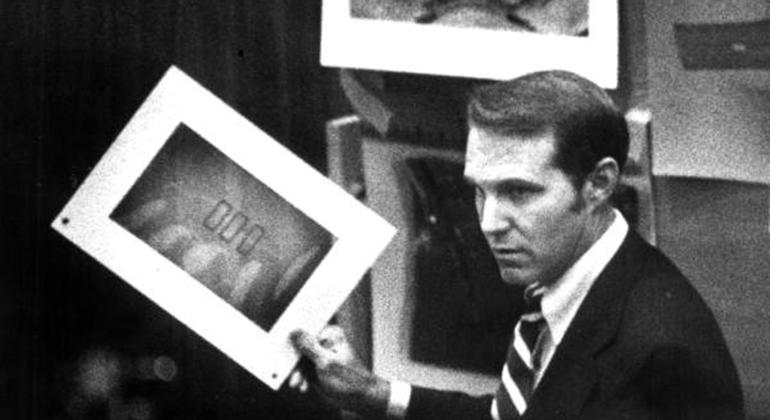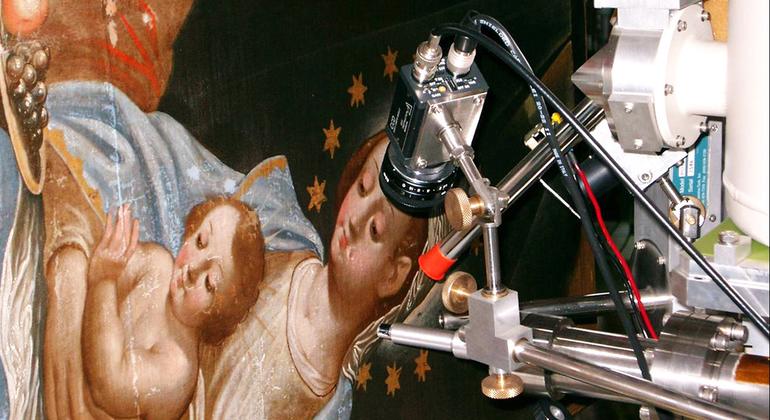
Nuclear techniques help analyze crime-related evidence such as glass fragments, bullet casings, or soil traces. How Nuclear Analysis Techniques Help Investigate Crimes? Culture and Education
Nuclear analysis techniques can be used in forensic science to examine evidence related to a wide range of crimes, from drug trafficking to murder or art forgery. Our colleagues from the International Atomic Energy Agency (IAEA) have a look at this.
X-ray spectrometry, neutron activation analysis, ion beam analysis, and radiocarbon dating are the most common scientific methods that can complement traditional crime investigation methods. By analyzing the chemical and physical properties of materials, supplemented by other evidence such as DNA or fingerprints, these techniques help link evidence collected at a crime scene to specific suspects.
Nuclear techniques help experts analyze microscopic traces in samples, which can reveal information that cannot be obtained in any other way, such as the true age of counterfeit art or whether a person has been poisoned. Moreover, nuclear techniques are significantly less destructive than the use of chemicals for analysis, which can alter the original state of fragile evidence.
X-ray Forensics
The use of X-rays is one of the most widely used analytical tools in forensic science. X-ray techniques are sensitive and reliable – they can be applied to microscopic samples and, in most cases, are non-destructive. X-rays typically provide results in minutes, so multiple analyses can be performed quickly. Portable X-ray equipment is also easy to transport, making it suitable for use at crime scenes.
X-rays can detect the presence and concentration of chemical elements and measure their amounts in virtually all types of materials. They can analyze the composition of soil, drugs, or minerals and determine their source. X-rays are also useful in comparative studies of paint, metals, or gunpowder residue, as well as in medical examinations.
Scientists use devices such as X-ray fluorescence spectrometers or synchrotrons to “bombard” samples of the material being studied with beams of X-rays. The beams interact with the atoms of the sample materials, creating radiation that can be detected and used to identify the chemical element to which the atoms belong.

Neutron activation analysis
Neutron activation analysis is a method of using the interaction between a flux of neutrons and a material being studied to determine the elemental unique characteristics of a sample, or, in other words, its exact isotopic composition, which allows one to obtain information about its age and origin.
When samples are bombarded with neutrons, their atoms release particles and/or radiation that can be recorded and analyzed by specialized detectors. This can help determine what material the sample is made of, how old it is, and where it came from. This technique is commonly used to analyze the composition of bullets to trace their origin. It can also be used to determine the elemental composition of hair, which can help reveal new details about a case, such as the presence of drugs or other toxic substances in the body. Neutron activation analysis can also be used to study the origin of food products.
Ion Beam Analysis
Ion beam analysis is another nuclear technique that is increasingly being used to investigate crimes. This type of analysis creates a beam of charged particles. When evidence samples are placed in the ion beam, they emit radiation, which is then analyzed.
The use of ions allows investigators to understand the composition and origin of a sample, which can help when analyzing drugs, explosives and gunpowder residue, counterfeit historical artefacts, or art. Determining the age and composition of samples means that they can be used more effectively as evidence in investigations.
Gunpowder trails, for example, can help in the investigation of violent crimes involving firearms. Gunpowder trails are the cloud of vapors and particles produced when the propellant in a cartridge case ignites during the use of a firearm. Nuclear techniques such as ion beam analysis can detect inorganic components produced at the moment of firing to identify tiny particles on items associated with the shooting (such as a suspect’s hands or clothing) to help identify the shooter.
Ion beams are also used to analyze shards of glass left behind in hit-and-run accidents. Research shows that a combination of ion beam analysis and machine learning can with an accuracy of up to 80 percent establish the affiliation of glass fragments from car windows to different models and manufacturers of cars.

Radiocarbon dating in forensics
Radiocarbon dating is a nuclear technique that uses an isotope of carbon to determine the true age of ancient objects made of organic materials and to detect fakes of art. The technique can be used to determine the age of objects up to 50,000 years old. It has already helped to determine the authenticity of paintings, statues, and other valuable historical objects in a number of investigations.
In 2019, for example, experts used radiocarbon dating to identify forgeries of two famous paintings – one impressionist and one pointillist. Fiber analysis of the canvases showed that they were made after the death of the claimed artists, helping to establish that the paintings were fakes.
Other Methods
Other common nuclear techniques, such as stable isotope analysis to detect food adulteration, may also be used in investigations.
Stable isotope analysis is a technique used to determine the origin and authenticity of various food products, allowing experts to detect and prosecute counterfeiters (such as those selling low-quality foods as premium products at high prices). Stable isotopes can be measured using specialized equipment that can detect minute differences in the ratio of light to heavy forms of a chemical element. Such analysis can provide factual data on a particular type of food product to ensure that it originates from the appropriate region and uses the genuine ingredients listed on the label (for example, detecting added sugar syrups in honey).
